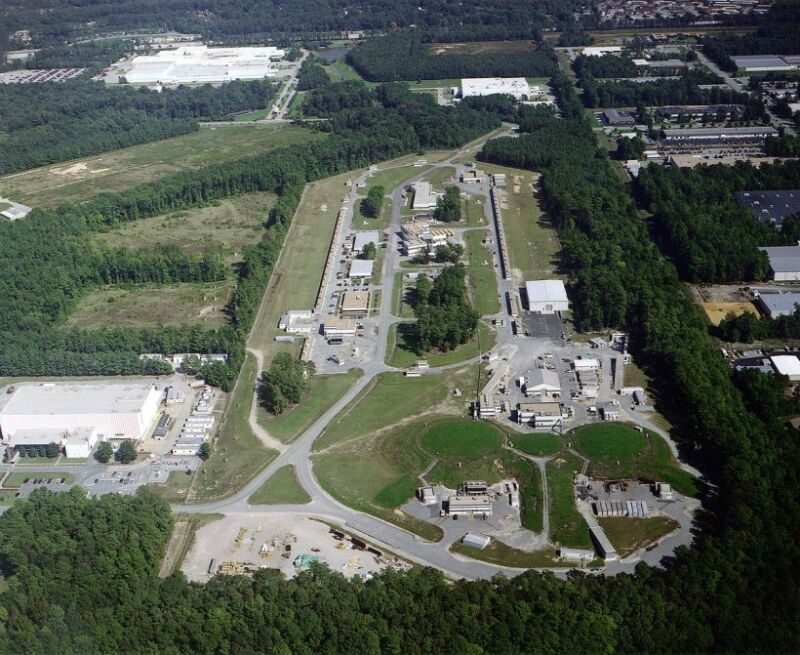

Proton’s mass radius is apparently shorter than its charge radius
source link: https://arstechnica.com/science/2023/04/protons-mass-radius-is-apparently-shorter-than-its-charge-radius/
Go to the source link to view the article. You can view the picture content, updated content and better typesetting reading experience. If the link is broken, please click the button below to view the snapshot at that time.

It's complicated —
Proton’s mass radius is apparently shorter than its charge radius
The quarks that give it charge aren't hanging out with the gluons that provide mass.
John Timmer - 4/3/2023, 8:30 PM

If you ask how much an object like a bicycle weighs, there's a simple answer. But if you ask where the mass of a bicycle is, things get more complex. The bike has a lot of parts—some of which move—that all have different volumes, shapes, and densities, so its mass is distributed irregularly around its form.
To an extent, this is similar to the question of where the mass of a proton is. The proton is a collection of quarks and gluons moving at relativistic speeds around a central point. Figuring out where its mass lives would be difficult even without the fact that the analogy with bicycles completely falls apart due to one awkward fact: A proton weighs much more than its component quarks, and the gluons that hold the quarks together are massless. In fact, the mass of the particles involved is somewhat irrelevant. "If you do calculations where you set the quark mass to zero, the proton is pretty much the same thing," physicist Sylvester Johannes Joosten told Ars.
Instead, much of the proton's mass comes from the incredibly high energy density created by the gluons' strong force interactions. So, to understand the mass of a proton, we have to understand what its gluons are up to. Which, given that they're massless and have no charge, is extremely difficult to do. But some experimental work has created a value for the proton's mass radius, which describes the distribution of mass within the particle. And it turns out the value is significantly different from the proton's charge radius.
Sniffing gluons
Without mass or charge, gluons are very difficult to detect; we primarily infer where they must have been by the debris they help create in particle collisions. To a degree, we can model their behavior, but that's primarily described by quantum chromodynamics, which is legendary for its ability to bring vast computational resources to their knees. So, even the best models of gluon behavior we have are approximations.
AdvertisementIf a proton's mass primarily depends on its gluons, then, and we can't tell what the gluons are doing, how can we possibly tell what's going on?
The trick was identifying a process that can be detected, yet is sensitive to the presence of gluons. That process is the conversion of energy (in the form of light) into matter. Specifically, a photon with sufficient energy can be converted into what's called a J/ψ meson, composed of a charm quark and charm antiquark through a process that's sensitive to the configuration of gluons in any nearby protons. By measuring the production of J/ψ mesons, it's possible to determine something called the gluonic gravitational form factors, which describes where the mass sits in the proton.
How we do this is, well, almost as complicated as the description of the process in the paragraph above. It starts with a beam of high-energy electrons, produced at the Thomas Jefferson National Accelerator Facility. These electrons are then moved back and forth across their direction of travel in a process with a highly technical name: wiggling. This causes them to lose energy, which they release in the form of high-energy photons.
Those photons are then sent through a chamber that contains a vat of liquid hydrogen. While transiting the vat, some of the photons will be converted to J/ψ mesons that will then promptly decay. Two of the products of that decay are an electron and a positron, which can be picked up by detectors, allowing the production of the J/ψ mesons to be registered. Based on these detections, it's possible to work back and figure out the gluonic gravitational form factors.
(Note that I am not even attempting to find an analogy for the gluonic gravitational form factors that would help you understand them. They're described in the paper as "the matrix elements of the energy–momentum tensor of the proton and encode the mechanical properties of the proton, whereas the trace anomaly of the energy–momentum tensor is a key component of the origin of mass according to quantum chromodynamics." You'll have to just trust everyone involved that they're terms that help describe the relationship between gluons and mass.)
Page:
Recommend
About Joyk
Aggregate valuable and interesting links.
Joyk means Joy of geeK